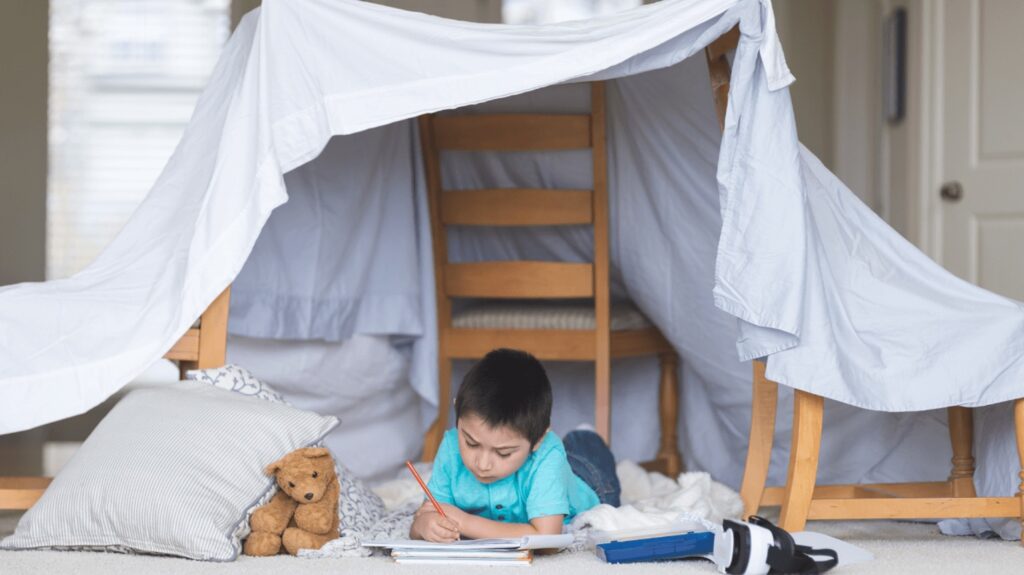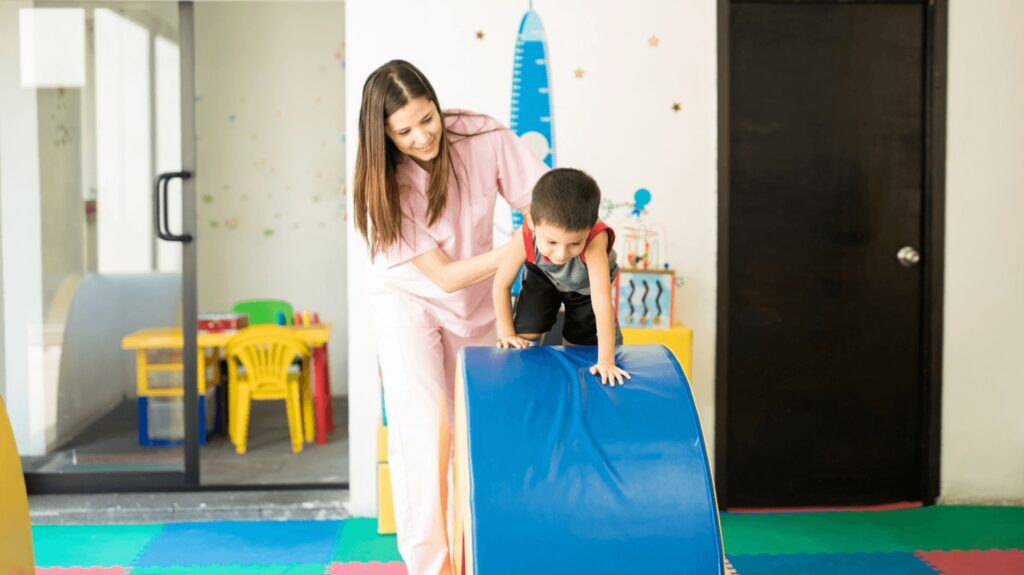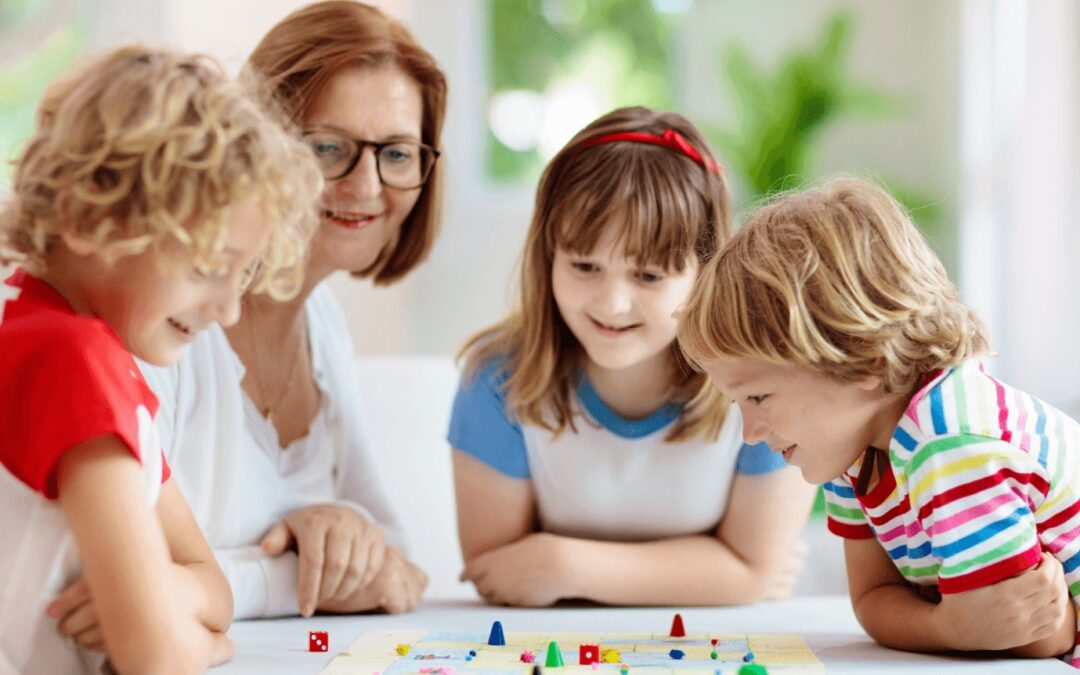Can’t beat the heat? Then don’t! Here’s our list of games and activities for kids that will keep them entertained indoors.
By Grace Draznin, Today’s Parent
Whether it be rain or intense (sun) shine, there are some summer days when staying indoors makes more sense – at least to the adults in the house. Kids are often bundles of energy, making it hard to keep them entertained inside the same four walls all day. But don’t worry, we’ve got you covered.
Indoor games can be a great solution for parents and caregivers looking to keep children busy on summer days spent inside. Moreover, they can yield many developmental benefits.
Benefits of indoor games
The benefits of indoor games for children depend on the game itself. Some of the most common beneficial gains include:
Promoting creativity and imagination
Activities such as building blocks and various arts and crafts allow children to use their imaginations and think outside the box while creating.
On using the imagination, Kristen Miller, director of education at Celebree Schools, highlights how dramatic play with puppets or toy dolls is another rewarding indoor activity that children can use to foster creativity.
“You can’t forget dramatic play … all the benefits of being creative and all of the communication and language skills you learn from role modelling conversations,” she says.
Encouraging social interaction and teamwork
Indoor group and multiplayer games can help children gain unique social skills. For example, word association games or Simon Says allow children to work on their communication abilities actively.
On a similar note, Miller emphasizes how board games are an underrated activity that can enhance teamwork skills and teach children to share and cooperate. Board games also allow children to develop essential skills such as logical reasoning, patience and problem-solving.
Providing educational opportunities
Technology has opened up a new realm of indoor games: fun games that kids love and that also double as educational tools.
Miller says technology can help children prepare for 21st-century global learning since we live in a technologically advanced world. “It can be incorporated in small ways,” she says, “like interactive educational field trips … where you can go and visit a zoo online with your mom and dad.”
Keeping kids active and engaged
While individuals engaging in sedentary behaviour are likely to use building blocks, board games, and technology, there are many fun indoor games that can get kids moving. Gross motor skills and movements are essential to everyday physical activity and hitting all developmental milestones. This can be as simple as making household chores fun by having a dance party or turning your to-do list into a bingo card game.

Taryn Parker, director of curriculum at Little Gym, says that there are games that require virtually no physical activity but can be modified to do so. She uses the example of rock, paper, scissors.
“We call it rock, paper, scissors, but you use your entire body,” she says. “Your rock is like a gymnastic position—a tuck. Your paper could just be your arms up straight. And then scissors is when you open your legs and do a straddle position.”
Types of Indoor Games
One of the best things about indoor games is that there is an innumerable amount of them, as they can be made up from just about anything. With that said, some of the most common types of indoor games include:
Board games and puzzles
- E.g., Scrabble Junior, Ticket to Ride
Active games and physical challenges
- E.g., freeze dance, hula hoop, musical chairs, red light green light
Creative and artistic activities
- E.g., colouring, building a Lego set
Educational games and learning activities
- PBS Kids Games, Starfall.com,
Top Indoor Games for Kids
Scavenger hunts
According to childreach.com, scavenger hunts sharpen children’s observational skills while also introducing them to the diversity of their home environment. You can get creative with creating your scavenger hunt, too, as there is no right or wrong way to go about it.
Miller recommends creating an alphabet hunt for your child. This scavenger hunt variation can help familiarize your child with the letters of the alphabet and their order.
The materials needed for an alphabet hunt include coloured paper, masking tape and markers.
You can use the paper to trace and cut out each letter of the alphabet (use different-coloured paper if you want to make it extra appealing for your child) and then tape the letters to different areas of the environment you’re using for the scavenger hunt. Also, be sure to let your child know if any rooms or areas in your home are off-limits so they won’t wander into those rooms while on their hunt.
Indoor obstacle courses
Both Miller and Parker recommend setting up an obstacle course for your child on a day spent indoors.
Similar to a scavenger hunt, there is no right or wrong way to create an obstacle course or specific materials needed. “You don’t need to go out and buy a bunch of fancy stuff to make an obstacle course,” says Parker. You can use towels, blankets, tape and stuff like that.”
She also emphasizes the benefits of taking a game like this and making it your own. “A lot of game honest work is making it up yourself,” says Parker, “that’s one of the best things that kids can learn.”
So take your paper towel rolls and whatever non-hazardous objects you have lying around that your child could either go around, under, or over and get creative!
Building a fort
While this may be more of an activity than a game, creating an indoor fort with your child is a fun and cozy way to spend your day together. While no set-in-stone supplies are needed to build a fort, people commonly use sheets and blankets, pillows, cushions, tape, chairs and books (to hold the fort together).

You and your child can also engage in activities within this activity, such as having a pillow fight while making the fort. Furthermore, once the fort is built, you can do several other activities inside it, such as watching a movie or playing a board game.
DIY board games
Speaking of board games, you can also create your own! A DIY board game is a fun and innovative pass time for an indoor day, as creating the board is an activity in itself, not just the game you play once it’s done!
Pbs.org has a great idea for a DIY board game that can be made with minimal materials.
Charades
The best thing about a classic game like Charades is that all you need to play is the person/people you’re spending the day indoors with!
The rules of the game are simple: Choose a player to begin the game by choosing a category, for instance, sports or Disney movies. The player will then select a word or phrase in that category to act out in front of other players. Whichever player guesses the word or phrase first gets a point! Game players can collectively decide how many points they must earn before winning.
Tips for Successful Indoor Playtime
What constitutes successful indoor playtime will likely look different for every child, depending on their age and developmental stage. That said, there are goals and tips to keep in mind while your child plays indoors to help ensure they are getting the most out of the experience.
For instance, Parker says she has three goals for each game that children play in the gym:
- The game is safe/played safely
- The game is fun
- The game provides an opportunity to learn something from it
Having these same goals for your children every time they partake in indoor play, or really any play, for that matter, will set your child up to reap the most benefits possible from whatever activity or game they’re doing.
Miller also emphasizes the importance of engaging in games and activities with your child as often as possible. Using an obstacle course as an example, she says that the best scenario is for the parents to get on the floor and do the obstacle course alongside the child.

“Use that opportunity to talk about what they’re doing, what they’re exploring, how they feel and how they can make it better,” she says, “the biggest piece about doing these types of activities is to bond with the child and make them think critically.”
Indoor Game Safety
Equally crucial to the benefits indoor games can yield for children is ensuring that their play environment is safe and supervised. This especially goes for infants and toddlers—age groups that have not yet reached the developmental stages where they can predict hazardous situations and prevent them accordingly. Many infants and toddlers also lack impulse control and have a limited ability to coordinate movements.
With this in mind, you must take the necessary precautions to set up a hazard-free play space for your child. This can be done through steps such as organizing the space so there is no clutter or tripping hazards, using soft flooring such as interlocking floor tiles so it’s gentle on the child’s knees and hands, and removing any sharp or pointy objects from the space.
While these precautionary measures can help create a safe play space for your child, they should not substitute for adult supervision. You should supervise your child’s indoor play as often as possible to ensure their safety and well-being.
Safety Tools for Parents
While adult supervision is ideal, we understand it is not always realistic. Household tasks and responsibilities such as cooking dinner and doing the laundry can cause you to be out of direct eye view of your child. Not to worry; there are safety tools available for purchase that can help you protect your child from potential hazards while they are unsupervised.
Miller recommends purchasing an anti-choking hazard device for your child. This easy-to-use plastic tube allows you to discover which of your child’s toys are potential choking hazards by seeing if the toy fits in the tube.
“If the toy fits, you probably shouldn’t have it,” says Miller, “that means it would fit in your child’s throat and restrict their windpipe.”
For parents of toddlers and preschoolers—age groups more likely to be struck by curiosity away from their playspace and wander as a result—investing in a playpen or play yard could be worthwhile.
Playpens provide a safe and secure environment for little ones and can also double as portable beds. Play yards are durable and portable, allowing parents to move play areas with ease. Both equally give parents peace of mind regarding their child’s safety while getting things done.
Read Article here: Today’s Parent

